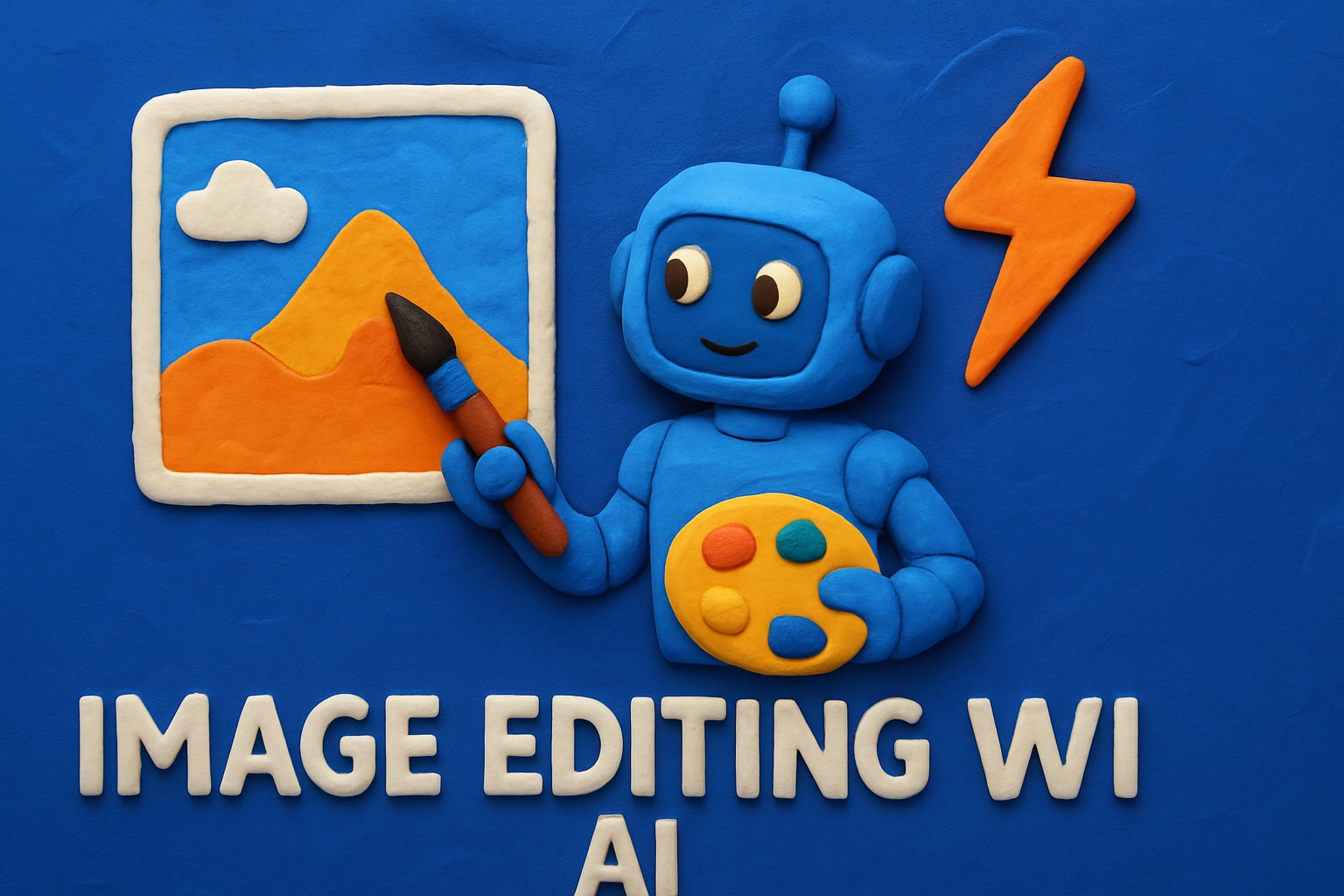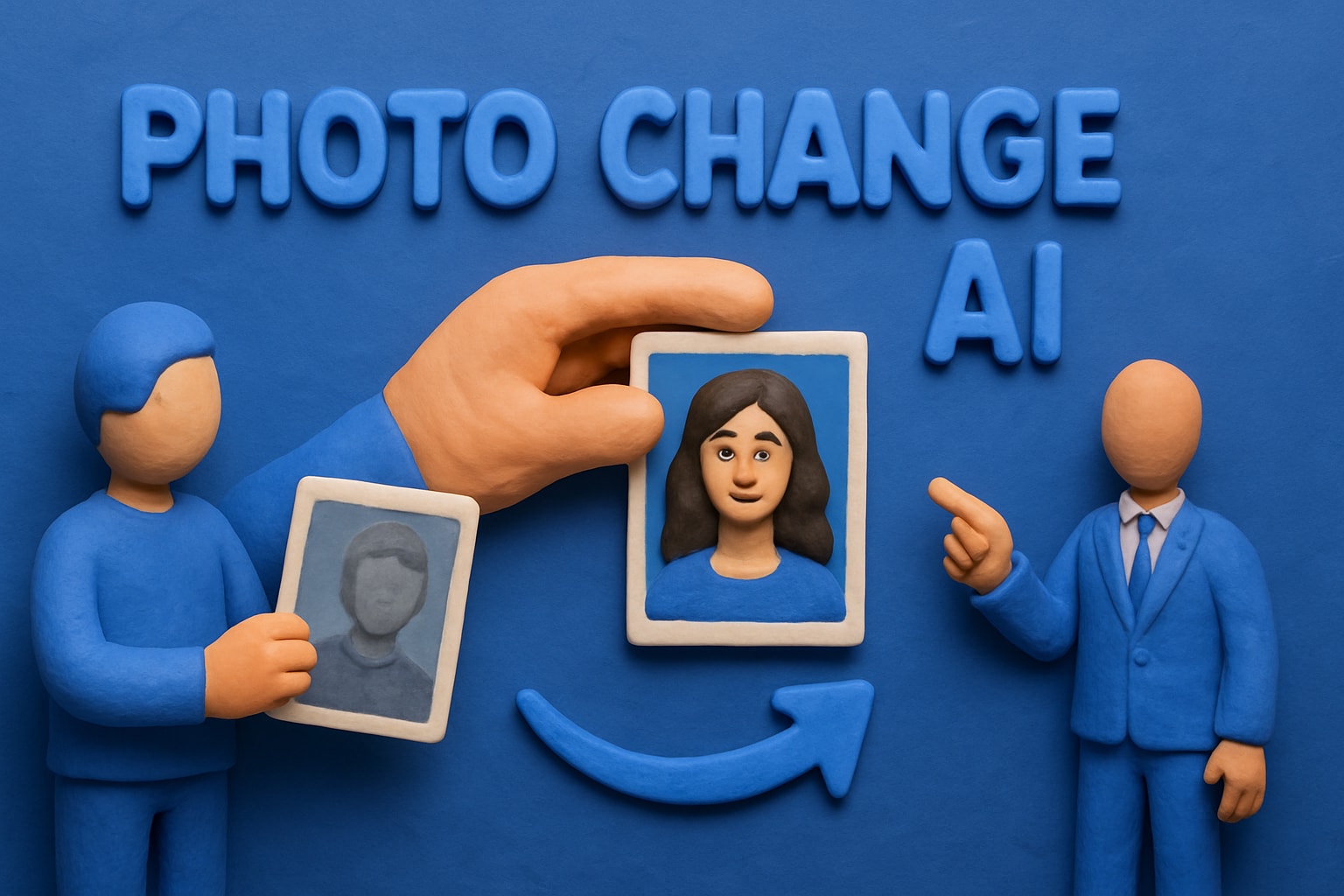Oct 15, 2025
The Essential Guide to AI Edited Photos (2025)
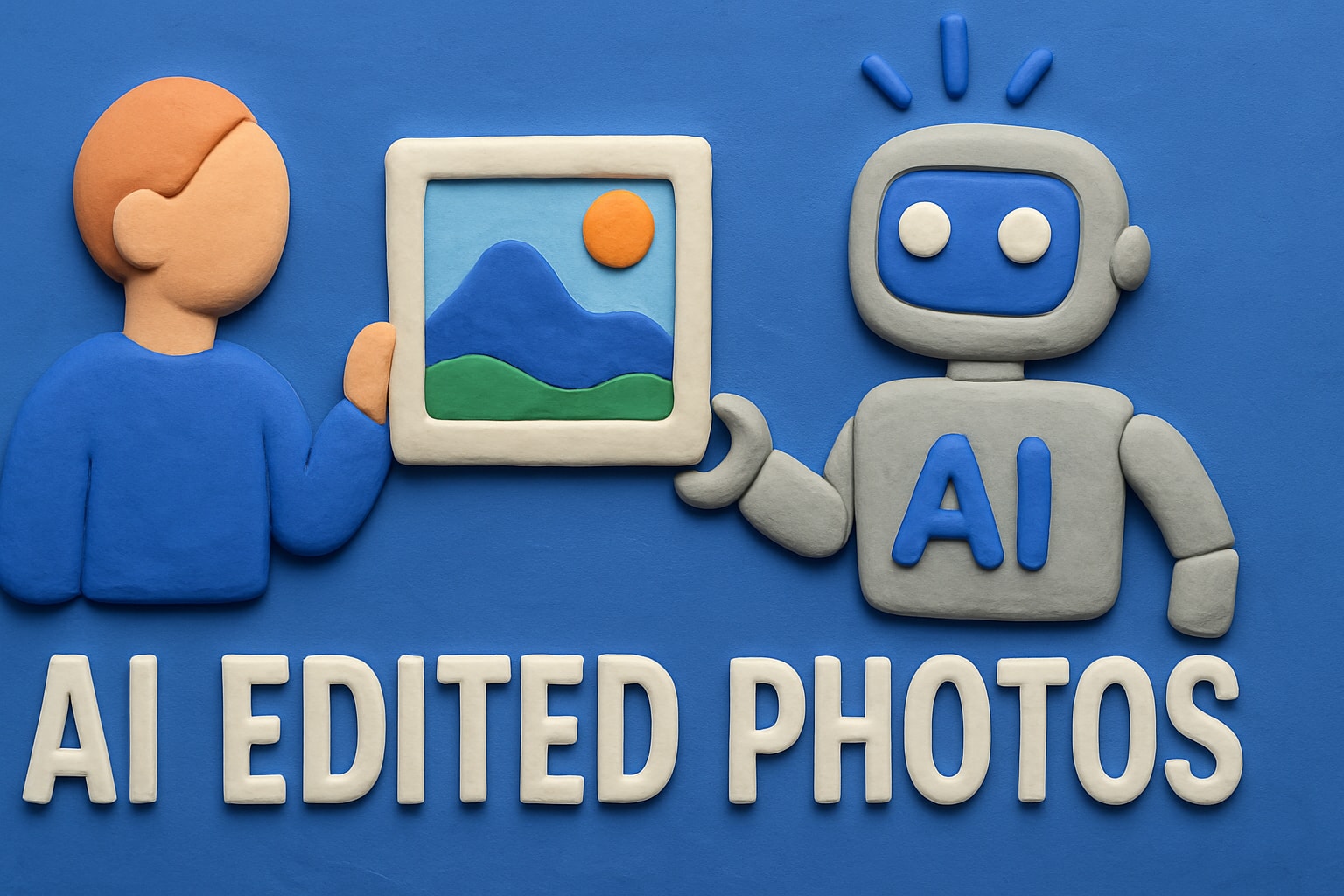
Imagine turning your everyday snapshots into magazine-worthy masterpieces in just seconds, all without any need for advanced editing skills. In 2025, ai edited photos are changing the way we approach image enhancement, restoration, and creative manipulation, making professional-quality edits accessible to everyone.
This essential guide will demystify the world of AI photo editing, highlight its powerful capabilities, and provide practical steps for you to take advantage of these innovations, whether for personal memories or business projects. Ready to discover how this technology works, the benefits it brings, the top tools available, and how you can get started? Let’s dive in and unlock the potential of your images.
Understanding AI Edited Photos: How the Technology Works
Imagine looking at a family photo from years ago and seeing it restored to crisp, vibrant clarity with a single click. This is just one example of how ai edited photos are changing the world of digital imagery. Understanding how this technology works can help you unlock its full potential, whether you are enhancing personal memories or elevating your business visuals.
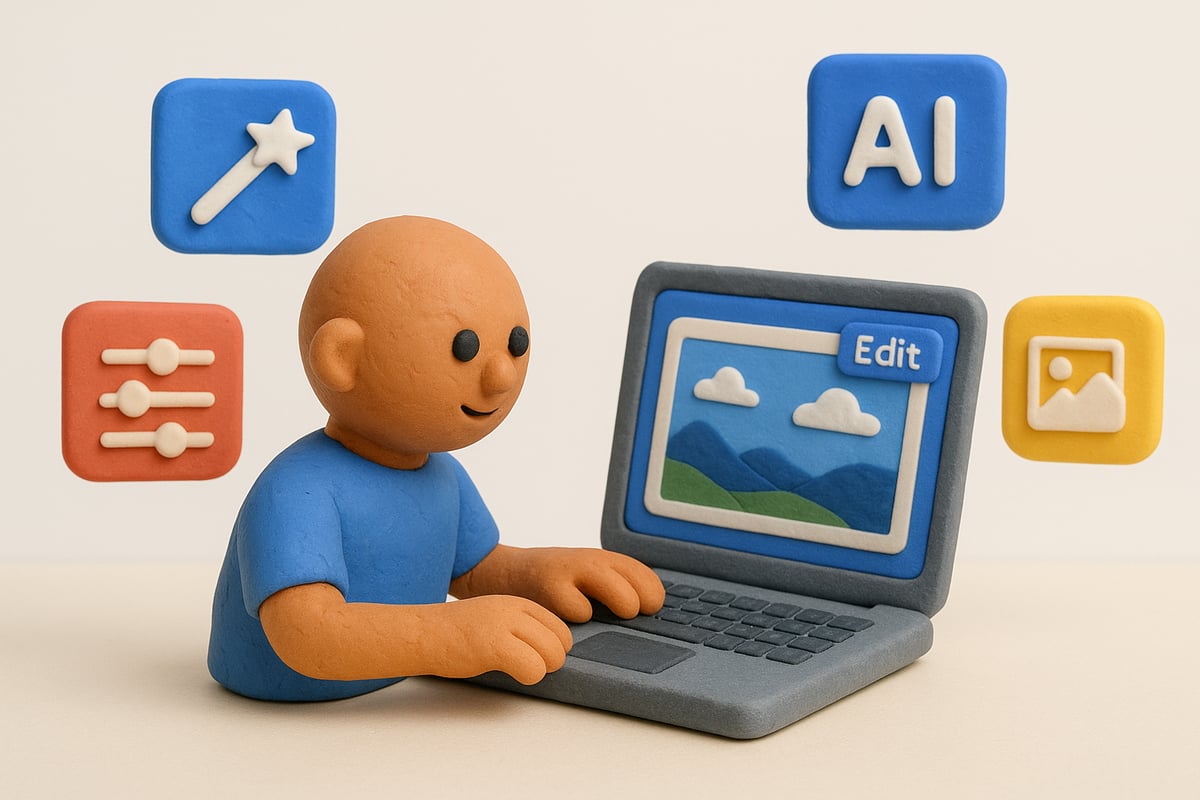
Defining AI Edited Photos
Ai edited photos are images that have been enhanced, restored, or transformed using artificial intelligence algorithms rather than traditional manual editing. Instead of painstakingly adjusting each detail, users can rely on AI tools to automate complex tasks with remarkable speed and precision.
Traditional editing often requires advanced skills and familiarity with professional software. In contrast, ai edited photos use machine learning models to analyze and adjust images instantly. For instance, AI upscaling can enlarge low-resolution pictures without losing detail. Object removal tools can erase unwanted elements, while colorization algorithms bring black-and-white images to life. These automated processes set ai edited photos apart from classic editing methods, making them accessible to everyone.
Core Technologies Behind AI Photo Editing
At the core of ai edited photos are powerful technologies like machine learning and neural networks. These systems are trained on massive datasets of images, learning to recognize patterns, textures, and objects. Computer vision enables AI to “see” and interpret the content of photos, distinguishing between people, backgrounds, and objects.
Deep learning takes this further, applying layers of analysis to enhance, retouch, or transform images with remarkable accuracy. One standout technology is Generative Adversarial Networks (GANs), where two neural networks compete to produce realistic edits. GANs are often used for style transfer, photorealistic enhancements, and creating entirely new visual effects. Together, these technologies make ai edited photos more intelligent and capable than ever before.
Key Milestones in AI Photo Editing (2015–2025)
The journey of ai edited photos began with simple automation, such as basic filters and one-click enhancements. In 2015, tools like DeepArt introduced neural style transfer, allowing users to turn photos into digital paintings. Adobe Sensei soon followed, integrating AI-powered features into popular editing platforms and making advanced edits more accessible.
Recent years have seen breakthroughs like Google Photos AI, which offers real-time suggestions, automatic enhancements, and even natural language prompts for edits. By 2025, innovations like real-time editing and voice-driven commands are transforming how users interact with their images. These milestones reflect the rapid evolution of ai edited photos, bridging the gap between professional results and everyday convenience.
Current Capabilities and Limitations
Today, ai edited photos can perform a wide range of tasks: restoring old images, enhancing colors, removing objects, and even transferring artistic styles. The accuracy and speed of these tools have improved significantly, enabling batch processing and consistent quality across large photo sets.
However, ai edited photos are not without limitations. AI sometimes struggles with context, leading to occasional artifacts or unrealistic edits. Bias in training datasets can affect how well the AI handles diverse subjects. Despite these challenges, the adoption of AI tools is growing rapidly. In fact, over 70% of professional photographers now use AI-powered solutions, according to AI in photography industry statistics. As technology advances, users can expect even greater accuracy and creative control from ai edited photos.
The Benefits and Impact of AI Edited Photos
Imagine having the power to transform any photo with just a few clicks. In 2025, ai edited photos offer a new era of possibilities for everyone, from casual users to industry professionals. These tools are not only changing how we see images but also how we interact with visual content daily.
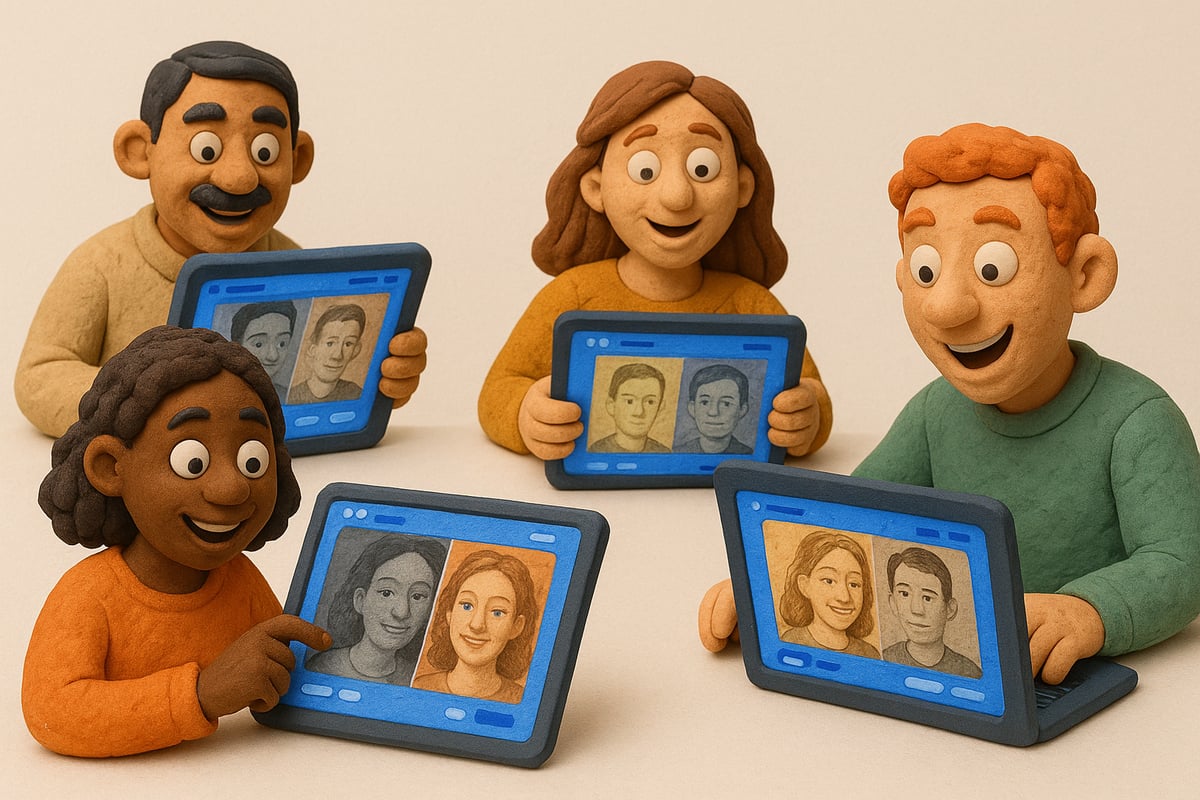
Accessibility and Democratization of Photo Editing
The rise of ai edited photos has made professional-quality editing accessible to everyone. Previously, mastering tools like Photoshop required hours of training and technical know-how. Today, intuitive AI-driven platforms allow users to achieve stunning results in seconds, regardless of experience.
This democratization means small businesses, students, and hobbyists can now enhance images without hiring experts. Features like auto-enhance, one-tap filters, and smart corrections are designed for ease of use. As a result, creative expression and visual storytelling have never been more inclusive.
Speed and Efficiency Gains
One of the most significant impacts of ai edited photos is the dramatic increase in editing speed. Manual retouching used to be a time-consuming process, especially for large batches of images. Now, AI-powered tools automate repetitive tasks, such as background removal or color adjustments, in moments.
According to AI's impact on photographers' efficiency, AI has saved photographers 13 million hours and 73 million dollars in 2024 alone. This efficiency boost allows professionals to focus more on creativity and less on tedious editing, fundamentally changing the workflow.
Enhanced Creativity and New Possibilities
Ai edited photos are unlocking entirely new creative horizons. With advanced features like style transfer, background swaps, and instant artistic filters, users can transform ordinary images into unique works of art. AI is not just a tool, but a creative partner—suggesting edits, generating variations, and helping users visualize concepts.
Designers, artists, and marketers now collaborate with AI to brainstorm ideas and experiment with different aesthetics. The result is a surge in innovation, with more people able to realize their visual ideas quickly and effectively.
Business and Professional Applications
Businesses across industries are leveraging ai edited photos to gain a competitive edge. In e-commerce, AI enhances product images, offers virtual try-ons, and ensures consistent presentation across hundreds of listings. Real estate professionals use AI for virtual staging and decluttering, making properties more appealing to buyers.
On social media, brands and influencers rely on AI to optimize content for engagement and reach. The automation of editing tasks frees up resources, enabling teams to focus on strategy and storytelling rather than manual adjustments.
Quality and Consistency Improvements
Consistency and quality are crucial for any brand or project. Ai edited photos provide standardized results across large batches of images, reducing the risk of human error or subjective inconsistencies. AI algorithms can match color tones, lighting, and composition with impressive precision.
For example, Airbnb reported a 15% increase in bookings after adopting AI-enhanced property photos. By ensuring every image meets high standards, AI helps businesses build trust and present a polished, professional image to their audience.
Popular AI Photo Editing Tools and Platforms in 2025
The world of ai edited photos is expanding rapidly, driven by powerful, user-friendly platforms. In fact, the AI photo editing market size has soared, reflecting a surge in both consumer and professional adoption. With a growing suite of tools, users now have access to features that were once reserved for industry experts.
Leading AI Photo Editors: Features and Comparisons
In 2025, several platforms dominate the landscape of ai edited photos. Adobe Photoshop (with its AI tools), Canva AI, Luminar Neo, Fotor, and Picsart stand out for their robust features and accessibility. These editors have integrated automation, creative presets, batch processing, and seamless cloud access to meet the needs of both casual and professional users.
Below is a comparison of key features:
| Platform | Automation | Creative Presets | Batch Processing | Cloud Access |
|---|---|---|---|---|
| Photoshop AI | Yes | Extensive | Yes | Yes |
| Canva AI | Yes | High | Yes | Yes |
| Luminar Neo | Yes | Advanced | Yes | Yes |
| Fotor | Yes | Moderate | Yes | Yes |
| Picsart | Yes | High | Yes | Yes |
These platforms enable ai edited photos with impressive speed and accuracy. Users can apply complex edits with just a few clicks, making professional-quality results accessible to all. The integration of AI has made the editing process more efficient and consistent, and the trend continues to reshape creative workflows.
Specialized Tools for Restoration, Colorization, and Enhancement
Some tools excel in specific aspects of ai edited photos, focusing on restoration, colorization, and enhancement. Remini and DeOldify are popular for restoring old or damaged images, reviving details and clarity. For colorization, Palette.fm and Algorithmia use advanced AI models to bring black-and-white photos to life with realistic hues. When it comes to enhancement, Topaz Labs and Let’s Enhance deliver sharpness and resolution improvements, turning ordinary shots into high-quality visuals.
These specialized tools empower users to recover and transform images that would otherwise remain inaccessible or degraded. Their AI-driven algorithms make complex tasks simple and fast.
AI-Powered Object Removal and Background Editing
The rise of ai edited photos has brought powerful object removal and background editing tools into the mainstream. Platforms like Cleanup.pictures, Remove.bg, and Inpaint allow users to erase unwanted elements or change backgrounds with remarkable precision.
- Cleanup.pictures: Effortless object removal
- Remove.bg: Instant background removal
- Inpaint: Precision edits for detailed cleanup
These features are invaluable for product photography, profile images, and marketing content. With AI, edits that once took hours now require only seconds, streamlining workflows and improving visual impact.
Artistic and Style Transfer Platforms
For those seeking creative flair, several platforms specialize in artistic ai edited photos. DeepArt, Prisma, and Artbreeder use AI to transform images into paintings, sketches, or entirely new styles.
- DeepArt: Converts photos into classic art styles
- Prisma: Offers a wide range of creative filters
- Artbreeder: Allows users to blend and morph images
These tools unleash new creative possibilities, letting users experiment with visual storytelling and artistic expression. AI acts as a collaborator, inspiring unique results and broadening the scope of digital creativity.
Weezard AI: Advanced AI Editing for All
Weezard AI stands out in the crowded field of ai edited photos with its comprehensive suite of features. The platform offers restoration, colorization, object removal, upscaling, and creative effects, all powered by advanced AI. Unique capabilities like natural language editing and batch processing cater to both individual and industry needs, including real estate, automotive, and e-commerce sectors.
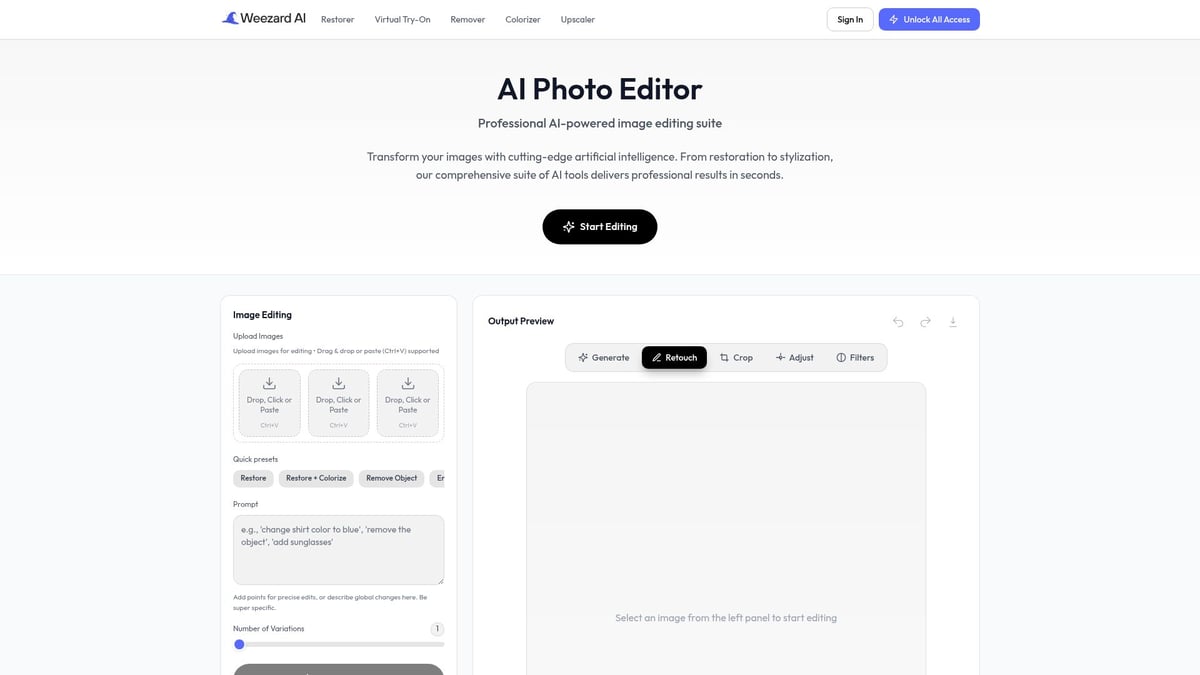
Weezard AI is entirely cloud-based, requiring no installation, and supports multiple image formats for maximum flexibility. Its interface is designed for both professionals and casual users, ensuring fast, high-quality results every time. With a free trial and flexible subscription options, Weezard AI makes high-end editing accessible to everyone, helping users unlock the full potential of ai edited photos.
Step-by-Step Guide: How to Edit Photos with AI in 2025
Ready to transform your images with ai edited photos? This step-by-step guide walks you through the modern workflow for achieving stunning results, whether you are a beginner or a seasoned professional. Each stage is designed for clarity, efficiency, and creativity, so you can unlock the full potential of ai edited photos with confidence.
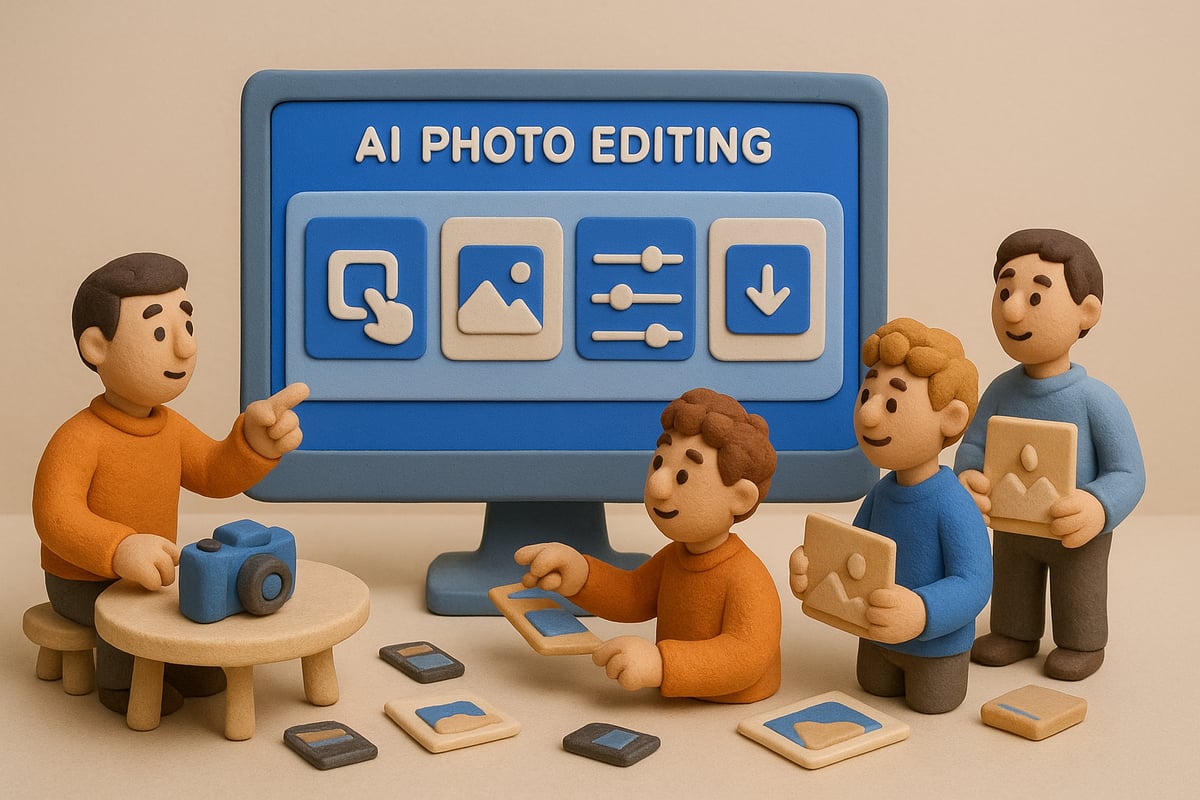
Step 1: Choose the Right AI Photo Editing Platform
Begin your journey with ai edited photos by selecting an editing platform that aligns with your needs. Consider whether your primary focus is restoration, enhancement, creative transformations, or business automation. Leading platforms offer a variety of features, from user-friendly interfaces to advanced batch processing and cloud-based access.
Evaluate pricing models, subscription options, and compatibility with your workflow. Stay informed about market trends and software advancements by consulting resources such as the AI photo editing software market forecast, which highlights evolving deployment trends and user demographics. Making an informed choice ensures a seamless start with ai edited photos.
Step 2: Upload and Prepare Your Image
Once you have chosen your platform, it is time to upload your image. Most ai edited photos platforms support a range of file formats, including JPEG, PNG, and TIFF. For the best results, use high-resolution images with clear details and minimal compression artifacts.
Check the platform’s recommended input specifications. Clean up your image by cropping or straightening if needed before applying ai edited photos tools. This preparation step helps the AI deliver precise, high-quality enhancements.
Step 3: Select and Apply Desired AI Edits
With your image ready, explore the editing options available for ai edited photos. Common tools include upscaling, object removal, color correction, and background changes. Many platforms offer presets for quick edits, as well as custom adjustments for more control.
For example, you can remove blemishes or unwanted objects in seconds, or adjust lighting and color balance to suit your vision. Experiment with different features to see how ai edited photos can elevate your images instantly.
Step 4: Refine and Customize Results
After applying your initial edits, refine your ai edited photos using manual fine-tuning tools. Adjust sliders for brightness, contrast, and saturation or use masking features to target specific areas. Many AI editors provide undo, redo, and version history, allowing you to experiment without fear of losing your progress.
Take time to review the changes closely. Fine-tuning ensures that ai edited photos look polished and natural, matching your creative intent with precision.
Step 5: Export, Share, and Store Your Edited Photos
When you are satisfied with the results, export your ai edited photos in the desired format and resolution. Most platforms support JPEG, PNG, and TIFF, as well as options for different quality settings.
Many ai edited photos tools offer direct sharing to social media platforms or integration with cloud storage solutions. Organize your edited images by creating folders and backups, ensuring easy access for future projects or sharing with clients and collaborators.
Step 6: Batch Processing and Workflow Automation
For users handling large volumes of images, batch processing is a game changer in ai edited photos workflows. Upload multiple files at once and apply consistent edits across your entire set, saving significant time and effort.
Automate repetitive tasks such as resizing, watermarking, or applying branding templates. AI-powered workflow automation streamlines business operations, making ai edited photos an indispensable asset for photographers, marketers, and e-commerce professionals.
Tips for Best Results and Avoiding Common Pitfalls
To get the most out of ai edited photos, follow these best practices:
- Ensure edits look natural and avoid over-processing.
- Examine images for AI artifacts or unexpected errors before sharing.
- Respect data privacy by using secure platforms and reviewing cloud storage policies.
- Maintain backups of original files to prevent accidental loss.
By following these tips, you can harness the full power of ai edited photos while maintaining quality, integrity, and security in your creative process.
Ethical, Legal, and Social Considerations of AI Edited Photos
The rise of ai edited photos has transformed how we perceive and interact with digital images. This technology brings new opportunities, but also introduces complex ethical, legal, and social challenges.
Understanding these considerations is essential for anyone using or encountering ai edited photos in 2025.
Authenticity and Trust in Digital Media
The proliferation of ai edited photos has made it easier than ever to alter images convincingly. This raises concerns about authenticity and public trust, especially in news, social media, and documentation.
Deepfakes and realistic manipulations can blur the line between fact and fiction. As a result, audiences may become skeptical of what they see online.
Maintaining trust requires clear labeling and responsible sharing of ai edited photos, especially in sensitive contexts.
Consent, Privacy, and Intellectual Property
Using ai edited photos that feature people brings important questions about consent and privacy. Before editing or sharing images of individuals, securing their permission is crucial.
Intellectual property rights must also be respected. Editing and redistributing someone else’s work without authorization can lead to legal disputes.
To protect privacy and ownership, always clarify the intended use of ai edited photos and follow applicable copyright laws.
Bias and Fairness in AI Editing Algorithms
AI algorithms that power ai edited photos learn from large datasets. If these datasets lack diversity, the resulting edits may reinforce societal biases.
For instance, skin tones and facial features can be misrepresented if the algorithm was trained on unbalanced data. This can affect cultural representation and fairness in photo editing.
The industry is increasingly focused on auditing datasets, improving inclusivity, and testing ai edited photos for equitable outcomes.
Regulation and Disclosure Requirements
Governments and platforms are responding to the spread of ai edited photos with new regulations. In some regions, laws now require explicit disclosure when images have been altered by AI, especially in advertising.
Social media platforms like Instagram and Facebook have started flagging ai edited photos to inform viewers. This push for transparency aims to reduce deception and protect consumers.
Staying updated on local regulations and platform policies is vital for anyone creating or distributing ai edited photos.
Societal Impact: Perceptions of Reality and Beauty
Ai edited photos are influencing beauty standards and perceptions of reality. Perfected images shared by influencers or brands can set unrealistic expectations for appearance and lifestyle.
These altered visuals can impact mental health, especially among young audiences. Ongoing debates consider the responsibility of creators and platforms in shaping public perceptions.
Recognizing the difference between natural and ai edited photos helps users maintain healthy self-image and critical thinking.
Best Practices for Responsible AI Photo Editing
Responsible use of ai edited photos involves transparency, ethics, and respect for others. Consider these best practices:
- Disclose when an image has been significantly altered by AI.
- Obtain consent before editing or posting photos of people.
- Avoid edits that mislead or misrepresent facts.
- Support diversity and fairness by using inclusive datasets.
- Stay informed about legal requirements and platform guidelines.
By following these principles, creators and users can harness the benefits of ai edited photos while minimizing potential harm.
The Future of AI Edited Photos: Trends and Predictions for 2025 and Beyond
The landscape of ai edited photos is rapidly evolving, with new technologies and creative possibilities emerging each year. As we look to 2025 and beyond, understanding these trends helps both professionals and enthusiasts stay ahead in a competitive visual world.
Next-Generation AI Editing Capabilities
By 2025, next-generation ai edited photos are expected to feature real-time, context-aware editing. Advanced algorithms will interpret scene elements, lighting, and even the mood of a photo, making edits that feel intuitive and natural.
Imagine uploading a portrait and instantly receiving suggestions that enhance emotion or adjust style based on current trends. AI will become more conversational, allowing you to describe the look you want in plain language. This shift brings photo editing closer to an interactive collaboration, rather than a manual process.
- Real-time adjustments for lighting, tone, and expression
- Mood-based transformations with a single prompt
- Seamless integration of creative input through natural language
As these capabilities mature, users will experience faster results and more control over their visual content.
Integration with AR/VR and Immersive Media
Ai edited photos are not limited to static images anymore. The next frontier is immersive media, where AI-enhanced visuals play a key role in augmented reality (AR) and virtual reality (VR) experiences.
For instance, real estate professionals can use AI to create virtual tours with realistic, enhanced visuals. In gaming and the metaverse, AI-generated textures and environments increase realism and engagement.
- Enhanced property tours with dynamic, AI-improved imagery
- Personalized avatars and backgrounds in VR social spaces
- Automated object placement and removal for immersive storytelling
As AR and VR adoption grows, the demand for high-quality ai edited photos in these spaces will surge, opening new creative and business opportunities.
Personalized and Adaptive Editing
Personalization is a driving force behind the next wave of ai edited photos. AI systems are learning to adapt to individual preferences, delivering results that match your unique style and needs.
By analyzing editing history and user feedback, AI tools will offer predictive suggestions, saving time and ensuring consistency. Whether you prefer vivid colors or a vintage look, adaptive algorithms will fine-tune each photo accordingly.
- AI learns your preferred filters and adjustments
- Predictive editing based on past projects
- Consistent style across entire photo libraries
This adaptive approach empowers users to maintain a signature aesthetic, even when handling large volumes of images.
Industry-Specific Innovations
Each industry is discovering unique ways to leverage ai edited photos. In healthcare, AI assists with medical imaging, improving clarity for diagnostics and documentation. Retail businesses use AI to enhance product visuals and enable realistic virtual try-ons, driving customer engagement.
- Medical imaging enhanced for accuracy and clarity
- Retail product images optimized for virtual fitting rooms
- Automotive and real estate sectors using AI for marketing visuals
These tailored solutions show the versatility of ai edited photos, ensuring that every sector can benefit from smarter, faster, and more reliable image processing.
Challenges and Opportunities Ahead
While the future looks bright, the journey of ai edited photos brings both challenges and opportunities. Balancing automation with creative control remains vital. Users must stay vigilant against over-processing and ensure that edits preserve authenticity.
Ethical and legal questions around manipulated images continue to spark debate. Transparent disclosure and responsible use are essential, especially as AI capabilities become harder to distinguish from manual edits.
- Maintaining creative control in automated workflows
- Addressing ethical and societal implications
- Ensuring transparency and trust in digital content
The key is to harness the power of ai edited photos while upholding standards of honesty and originality.
Staying Ahead: Skills and Knowledge for the AI Photo Editing Era
To excel in the world of ai edited photos, digital literacy and critical thinking are indispensable. As tools evolve, continuous learning ensures you can adapt to new features and workflows.
Explore online courses, industry webinars, and community forums to stay updated. Developing an understanding of AI’s strengths and limitations helps you make informed decisions and create compelling visuals.
- Invest in ongoing education about emerging AI tools
- Practice evaluating AI-generated results for quality and ethics
- Join creative communities to share insights and best practices
Embracing these habits will position you at the forefront of ai edited photos, ready to leverage every new innovation that the future holds.
Now that you’ve explored how AI is changing the way we edit, enhance, and share photos, you might be excited to try these powerful tools for yourself. With Weezard AI, you have the opportunity to turn your everyday snapshots into extraordinary, professional-quality images—quickly and without the need for advanced technical skills. Whether you want to restore old memories, optimize images for your business, or simply have fun experimenting with creative effects, it’s easier than ever to get started. Ready to experience the next generation of photo editing? Make magic!
Ready to jump in?
Experience the power of AI-driven image editing with Weezard AI. Professional results in seconds.
